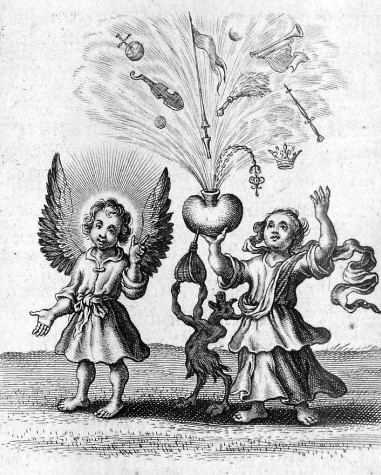1520 · (Cologne
by [PLATO]; CICERO (translator)
(Cologne: Quentel heirs, 1520. 4to (194 x 140 mm). Collation: A-B4. [15] pages. Woodcut initial on title, the latter in two sizes of large gothic types, text in small gothic types, leaded, epigram on title and text heading in roman. (Small stain in top of gutter margins, small inkstain on A1v, f. B3 corner clipped.) Bound in early 18th-century South German pasteboards completely overpainted in imitation of a Renaissance binding: both covers painted in watercolor and gouache on a brown ground with outer panel of scrolling tendrils with red flowers and leaves, central panel with arabesque foliate decor, two vases at top and bottom, and central cartouche (truncated)








